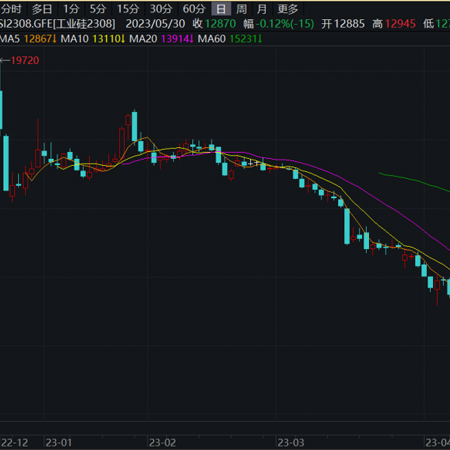Silicon metal futures are approved by the China Securities Regulatory Commission to be listed on the Guangzhou Futures Exchange. The silicon metal futures starts officially from December 22, 2022 (Thursday). The trading hours are from Monday to Friday, 09:00-10:15, 10:30-11:30 and 13:30-15:00. The contract trading unit is 5 tons/lot, and the minimum delivery unit is 1 lot (5 tons) of silicon metal.

The Guangzhou Futures Exchange stipulates that model silicon metal 553 that meets the China national silicon metal standard <GB/T 2881-2014> is a standard commodity. The specific content requirements of Si 553 are: Fe 0.5% max, Al 0.5% max, Ca 0.3% max. The product particle size is 10-100mm, of which less than 10mm and greater than 100mm should be less than 10%. Silicon 553 is the mainstream silicon metal variety in the market. In 2021, China’s silicon production is about 3.21 million tons. Of which Si #553 and Silicon #421 are the main production and circulation models. Those 2 models accounting for more than 70% of the total market share.
According to this regulation, other models such as silicon metal 441, 521, Silicon 3303 also meet the requirements of standard commodity. These are metallurgical grade silicon. Si #553 is mainly for the production of recyclling cast aluminum alloys such as ADC12. Other models are for primary-cast-aluminum alloys such as A356.2. In addition, Silicon metal 421 is an alternative commodity, which the main application area is production of organic silicon.
Impact of Silicon Metal Futures
After the listing of silicon metal futures, more traders have participated in futures trading, and more transparent market information has been provided for spot traders. The futures market provides a platform for collecting spot market information, reflecting the changes in the entire spot market. Therefore, market changes in spot supply and demand can be judged based on the price trend of the futures market. At the same time, since the futures market reflects the market’s expectations for future prices, silicon metal producers can judge the market situation based on the price signals of futures, so as to flexibly respond to market changes and reduce operating risks.
The increase in the volatility of silicon spot prices in recent years has brought huge challenges to Silicon Metal Manufacturers in China. Since 2020, industrial silicon has been in a state of overcapacity as a whole, with supply growth exceeding demand growth. In the first half of this year, due to oversupply and high inventory, silicon prices have also shown a continuous downward trend. In the case of oversupply, factories face the risk of inventory backlogs. The futures market can provide companies with risk avoidance tools to resolve the risk of market fluctuations.
